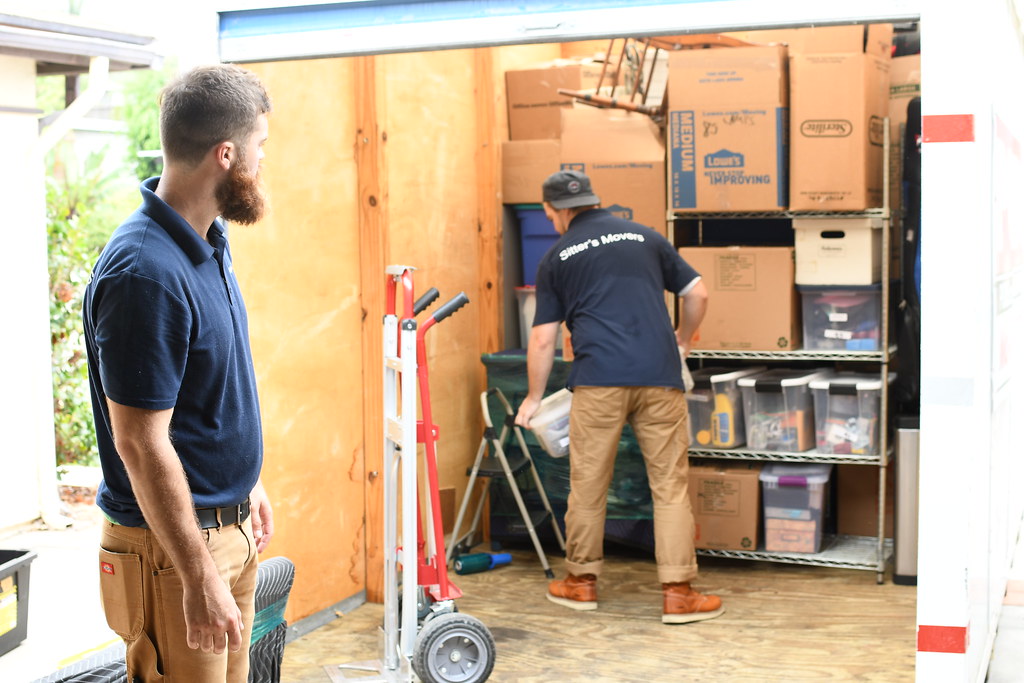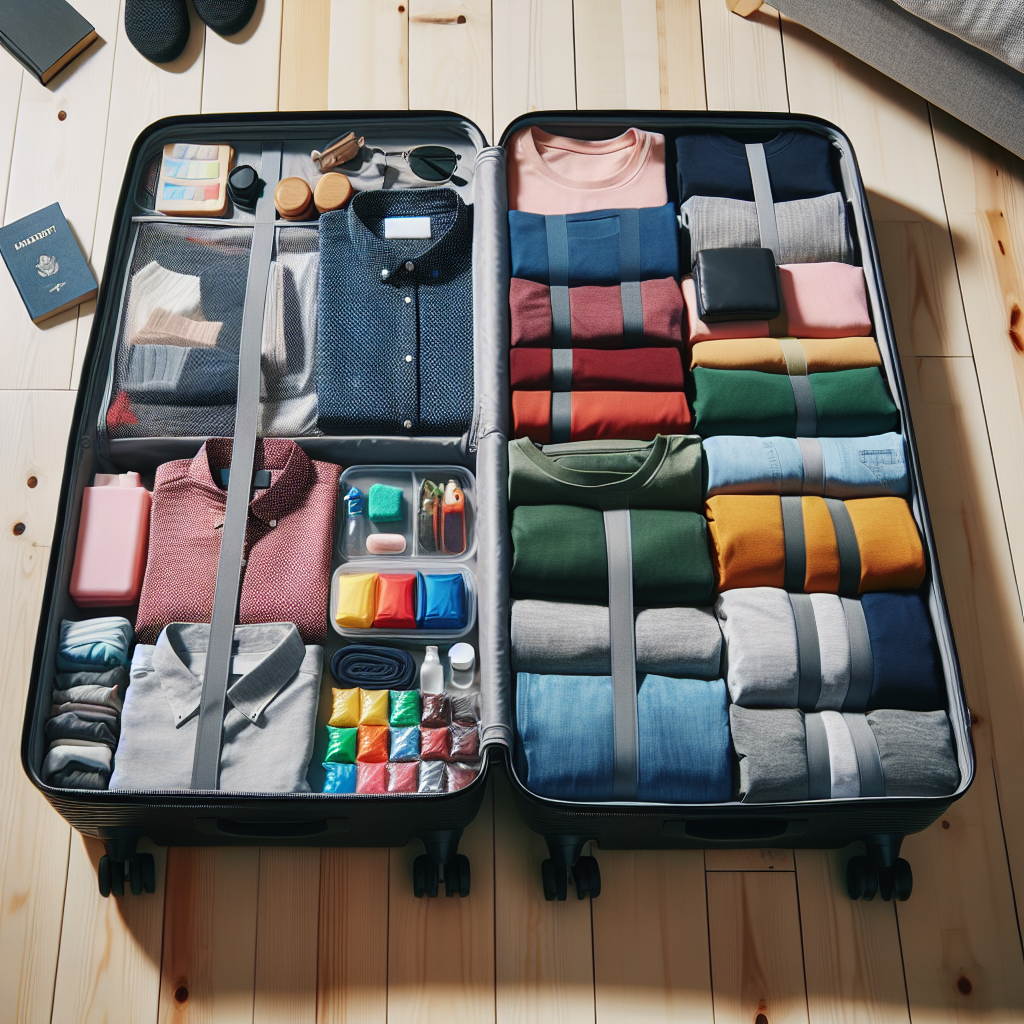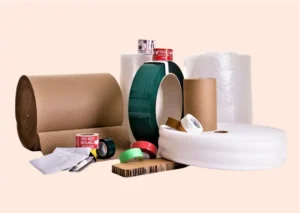Table of Contents
- 1 Sorting and Decluttering: Lay the Foundation
- 2 Gathering Supplies: The Movers’ Toolbox
- 3 Packing Strategies for Different Household Items
- 4 Room-By-Room Packing Guide
- 5 Heavy Lifting: When to Call in the Pros
- 6 Pre-Move Must-Dos: Final Preparations and Checklist
- 7 Last Minute Tips for Moving Day Success
- 8 Author

Key Takeaways
-
Custom packing services tailor the moving process to fit your unique needs, ensuring the safety of your belongings.
-
Decluttering before you start packing can save time and reduce moving costs.
-
Using the right packing materials is crucial for protecting your items during the move.
-
Specific packing strategies for different items can prevent damage and make unpacking easier.
-
Professional packers can significantly reduce the stress of moving, especially for valuable or fragile items.
Moving to a new home can be a mix of excitement and anxiety. There’s a lot to think about, but one thing’s for sure: the way you pack can make a huge difference. With custom packing services, you can make sure that everything from your grandmother’s china to your home electronics is safe and secure for the journey. Let’s dive into how to streamline your family’s move with tailored packing solutions.
Why Custom Packing Makes All the Difference
Imagine opening boxes at your new home to find everything intact, just as you left it. That’s the beauty of custom packing. It’s not just about putting things in boxes; it’s about understanding the best way to protect each item based on its size, shape, and fragility. Custom packing services offer the expertise to do just that, providing peace of mind that your belongings are in good hands.
Planning Your Pack: Steps to a Stress-Free Move
Before you even seal the first box, a solid plan can set the tone for a successful move. Start by categorizing your belongings and deciding what will come with you. This is also the perfect time to declutter. Remember, the less you have to move, the easier and cheaper it will be.

Sorting and Decluttering: Lay the Foundation
Decluttering is the first step to a seamless move. It’s about making decisions on what stays and what goes. Think of it this way: if it hasn’t seen the light of day in over a year, it’s probably not worth taking. Selling or donating items not only lightens your load but can also brighten someone else’s day.
Create a Sorting System
Set up a system with labels or colored stickers to categorize items for packing, selling, donating, or throwing away. This visual aid helps you keep track of what’s going where and simplifies the packing process later on.
Reducing Your Load: What to Keep, Sell, or Donate
It’s time to be ruthless. If you haven’t used something in a long time, it might be better to sell it or donate it to charity. Besides, it’s an opportunity to start fresh in your new space with only the things that truly matter to you.
Gathering Supplies: The Movers’ Toolbox
Once you’ve decluttered, you’ll have a clearer idea of what needs to be packed—and what you’ll need to pack it. Quality packing materials can mean the difference between a family heirloom arriving in one piece or in pieces.
Choosing the Right Boxes
Boxes come in all shapes and sizes, and picking the right ones is crucial. For books, you’ll want small, sturdy boxes that can handle the weight. For your wardrobe, consider wardrobe boxes that let you hang clothes directly inside. It’s all about finding the perfect fit for your items.
Protective Packing Materials You Need
Bubble wrap, packing peanuts, and sturdy tape are your best friends when it comes to keeping your items safe. Make sure you have plenty on hand before you start packing.
Labelling for Efficiency: Making Unpacking a Breeze
Label each box with its contents and the room it’s destined for. This not only helps you but also aids anyone helping you move, whether it’s friends or professional movers. Detailed labels can turn the chaos of moving day into a well-organized affair.

Packing Strategies for Different Household Items
Each item in your home requires a different packing strategy. Your books are not your glassware, and your clothes are not your electronics. Understanding the right way to pack each category will save you from headaches later.
Safeguarding Your Fragile Items
Fragile items like dishes and glassware need special attention. Wrap each piece individually and cushion them inside the box. It’s a bit more work, but when you unpack them without a single chip or crack, you’ll know it was worth it.
Managing Apparel and Closet Contents
When it comes to clothes, it’s not just about folding them up and tossing them into a box. Wardrobe boxes are a game-changer—they have a hanging rod inside, so you can transfer your clothes directly from closet to box, virtually wrinkle-free. For off-season clothing, vacuum-sealed bags can save a ton of space and protect garments from moisture and pests.
Best Practices for Electronics and Appliances
Electronics and appliances require a bit of know-how to pack correctly. Always use the original boxes if you have them—they were made for this very purpose. If not, make sure to use boxes that are a close fit and fill any gaps with bubble wrap or foam. Don’t forget to label cables and take photos of how they were connected. It will save you a lot of guesswork when setting them up again.
Packing Furniture for a Secure Transit
Furniture can be one of the trickiest things to move. Disassemble what you can, keeping all screws and small parts in a labeled bag. Use moving blankets or bubble wrap to protect surfaces from scratches and dings. Remember, when it comes to moving furniture, more padding is always better.

Room-By-Room Packing Guide
Approach each room with a plan. Start with the least used spaces and work your way to the more frequently used areas. This strategy keeps essential items available for as long as possible and helps maintain order during the packing process.
Pack one room at a time, finishing completely before moving on to the next. This helps keep your belongings organized and makes unpacking easier because everything you need for a specific room will be in the same set of boxes.
Conquering the Kitchen: A Systematic Approach
The kitchen is often the most daunting room to pack with its myriad of gadgets, utensils, and breakables. Pack dishes on their sides, not flat, and use dividers for glasses and stemware. Pots and pans can be nested together to save space, with paper or foam in between to prevent scratches.
Bedroom Bliss: Simplifying Personal Spaces
Bedrooms are personal sanctuaries, and packing them up can feel invasive. Keep it simple by using suitcases for your clothing, and remember to label them. For bedding, pillows, and curtains, use large, clear plastic bags—they’re lightweight and will allow you to see the contents at a glance.
Living Area Logistics
Your living room likely contains a mix of items, from books to picture frames to electronics. Use book boxes for heavy items like books and games. Cushion picture frames with bubble wrap and place them in boxes with plenty of padding. Remember to keep electronic devices together with their cords and remotes.
Bathroom Packing Without the Hassle
Bathrooms might seem easy to pack, but with all the small items and potential for spills, they require careful attention. Make sure all caps and lids are secure to prevent leaks. Wrap any breakables in hand towels or bubble wrap. Keep a separate box for essentials you’ll need right away at your new home, like toilet paper, soap, and a shower curtain.

Heavy Lifting: When to Call in the Pros
There comes a point in every move when you have to decide whether to call in professional help. This could be for the entire move or just for certain items that are particularly heavy, valuable, or awkwardly shaped. Professional movers are not only trained to handle heavy lifting, but they also have the right equipment to do it safely.
Deciding on a Professional Moving Service
Choosing a professional moving service can be daunting, but it’s all about research. Look for companies with good reviews, transparent pricing, and services that match your needs. And remember, if you have items that require custom packing, make sure the company offers that service. It’s worth the investment for items that carry sentimental or monetary value.
How to Work Alongside Movers for a Smooth Experience
When the pros come in, make sure you’re prepared. Have a clear path for them to work, and be available to answer questions. Communicate your expectations clearly, especially when it comes to delicate items. The better you work with your movers, the smoother the day will go.
Pre-Move Must-Dos: Final Preparations and Checklist
One week before the move, confirm details with your movers, finish up any last-minute packing, and prepare an essentials box with items you’ll need on day one in your new home.
As the moving day approaches, ensure all boxes are sealed and labeled. Create a detailed inventory of your items and number the boxes to keep track of everything. This will also help with the unpacking process.
Check off utilities and address changes a few days before the move. This ensures you’ll have power and water when you arrive and your mail will be redirected to your new address.
Prepare a moving day kit with snacks, water, chargers, important documents, and a change of clothes. You’ll thank yourself later for having these essentials handy.
One Week to Go: The Final Countdown
The final week before a move can be hectic, but it’s also the time to make sure nothing has been overlooked. Double-check your list of items to pack, confirm your travel arrangements, and make sure you have a plan for your first night in the new home.
Move Day: The Essential Kit
On the day of the move, having an ‘Essential Kit’ is a lifesaver. Think of it as your survival box for the first 24 hours in your new home. It should include toiletries, a change of clothes, medications, important documents, phone chargers, basic tools, and snacks. This kit will keep you comfortable and prepared while the rest of your belongings are still boxed up.

Last Minute Tips for Moving Day Success
Even with the best planning, moving day can bring some last-minute surprises. To minimize stress, start the day with a good breakfast and review your checklist one last time. Make sure your phone is fully charged, and you have cash on hand for any unexpected expenses. Most importantly, stay hydrated and take breaks when you need them.
Ensuring Everything is Accounted For
As your belongings are being loaded onto the truck, take one final walkthrough in your old home. Check every room, closet, and cabinet to ensure nothing is left behind. Keep your inventory list handy to check off items as they are being moved, ensuring everything is accounted for.
Setting Up Your New Space: First Steps
Once you arrive at your new home, it’s tempting to start unpacking immediately. However, take a moment to clean and prep the space first. Set up essential furniture like beds and plug in major appliances. Then, start with unpacking your ‘Essential Kit’ and move on to the boxes labeled ‘Open First’ that contain necessities for each room.
FAQs
Got more questions about moving? Here are some quick answers to help you navigate your packing and moving journey.
What’s the Best Way to Sort Items Before a Move?
The best way to sort items is by category and room. Use color-coded labels to indicate which room each box belongs to and list the main items inside. Keep a separate ‘Donate’ and ‘Sell’ pile as you go to streamline the process.
Are There Items That Shouldn’t Be Packed?
Yes, there are items that you should keep with you. These include important documents, jewelry, family heirlooms, and any other valuables or essentials that you might need quick access to during the move.
When it comes to custom packing services, they are often the unsung heroes of a stress-free move. These services can be the difference between a chaotic moving experience and a seamless transition into your new home. With the right preparation, materials, and strategy, your belongings will be safe, and you’ll be able to enjoy the journey to your new beginning.
But why stop at packing when you can have professionals take care of the heavy lifting as well? Whether it’s a grand piano, a delicate sculpture, or your everyday dishes, custom packing services ensure that your items are given the care they deserve. Besides that, they can offer invaluable advice and solutions for any of your moving concerns.
Therefore, if you’re looking for a reliable, efficient, and custom-tailored moving experience, don’t hesitate to Contact Us. Our team of experts is ready to help you make your move as smooth and stress-free as possible. From packing to transport, we’ve got you covered every step of the way.
Remember, the goal is not just to move your things, but to move your life. The right custom packing service will handle your belongings with the same care and attention you would give them yourself.
How Can I Protect Fragile Items During a Move?
-
Wrap each item individually with bubble wrap or packing paper.
-
Use sturdy boxes and fill any empty spaces with packing peanuts or crumpled paper.
-
Clearly label boxes as ‘Fragile’ on all sides.
-
Place heavier items on the bottom and lighter items on top within the box.
-
Avoid overpacking boxes to prevent undue pressure on the contents.
Packing fragile items requires patience and attention to detail. Always take the time to secure these items properly to avoid any heartbreak when you reach your new home.
How Do I Choose the Right Moving Company?
When choosing a moving company, look for one with a solid reputation, transparent pricing, and services that match your specific needs. Check online reviews, ask for recommendations from friends, and get quotes from multiple companies. Make sure they are licensed and insured, and don’t be afraid to ask questions about their packing and moving processes.
What Should I Include in My Essential Moving Day Kit?
Your moving day kit should include items like:
-
Personal identification and important documents.
-
Medications and first aid supplies.
-
Basic toiletries and a change of clothes.
-
Phone chargers and electronics.
-
Snacks, bottled water, and a small set of utensils.
-
A small tool kit for assembling furniture.
-
Bedding and towels for the first night.
By following these guidelines and taking advantage of custom packing services, you can ensure that your move is not just a change of address, but a positive step towards your next adventure. And remember, if you need help or advice along the way, we’re just a click away. So go ahead and Contact Us today to learn more about how we can help you with your custom packing needs.



